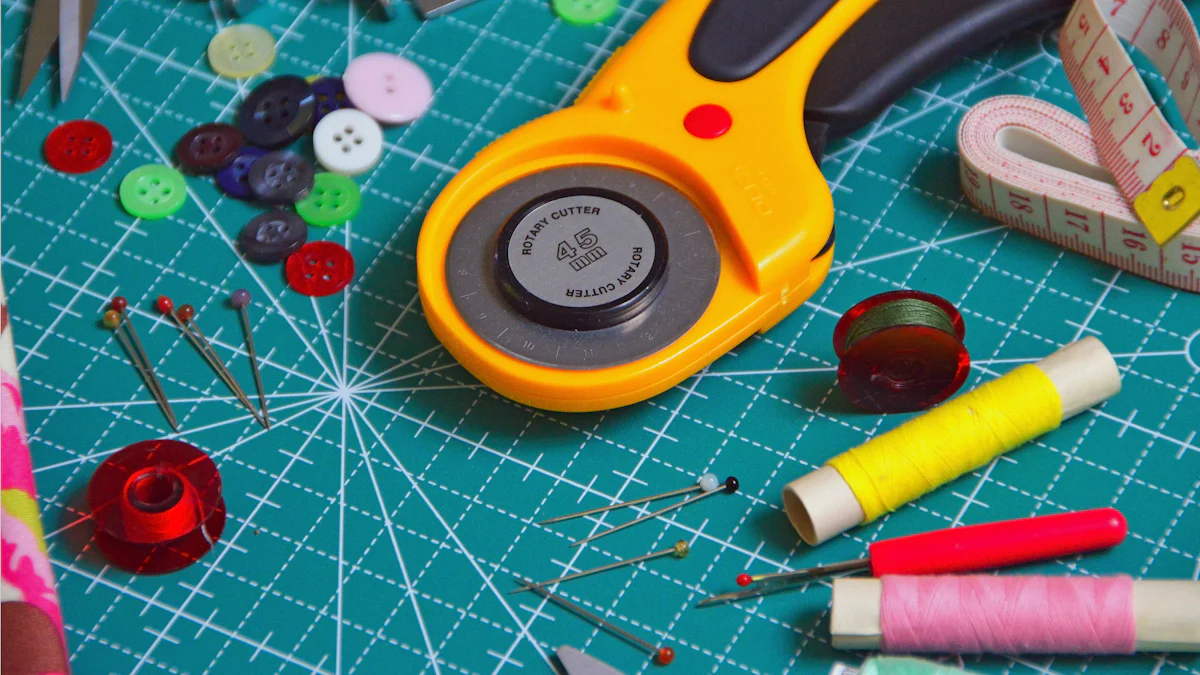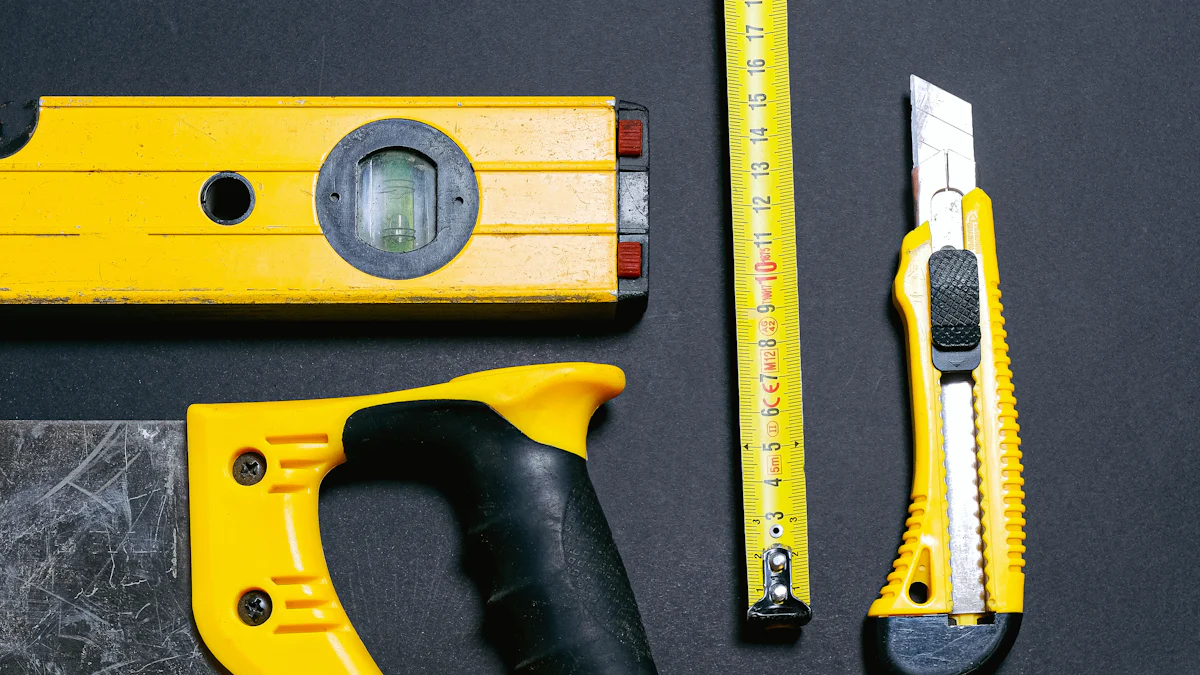
The rotary cut tool revolutionizes cutting tasks with precision and ease. Mastering the rotary cut tool ensures cleaner, more accurate cuts compared to traditional scissors. This tool excels in handling straight lines and multiple layers of fabric. Extended use reduces hand fatigue, making it ideal for long projects. The rotary cut tool’s longevity surpasses existing cutters, offering eight to ten times longer tool life. Understanding and mastering this tool enhances efficiency and craftsmanship in various projects.
Understanding the Rotary Cut Tool
What is a Rotary Cut Tool?
Definition and Basic Components
A rotary cut tool is a versatile handheld device designed for precision cutting. The tool features a circular blade that rotates as it cuts through materials. Users can find various sizes of blades, typically ranging from 18mm to 60mm. A comfortable handle and safety guard enhance user control and safety.
Different Types of Rotary Cut Tools
Several types of rotary cut tools exist to meet different needs. Manual rotary cutters are popular among quilters and crafters. These tools excel in cutting fabric and paper. Driven rotary cutting tools, on the other hand, cater to industrial applications. These tools handle heat-resistant alloys and composite materials efficiently.
Uses of the Rotary Cut Tool
Common Applications in Various Crafts
The rotary cut tool finds applications in numerous crafts. Quilters use it to cut multiple layers of fabric with ease. Scrapbookers appreciate its ability to make clean, intricate cuts. Woodworkers use the tool for detailed carving and sanding tasks. The versatility of the rotary cut tool makes it an essential addition to any craftsperson’s toolkit.
Benefits of Using a Rotary Cut Tool Over Other Cutting Tools
The rotary cut tool offers several advantages over traditional cutting tools. Precision stands out as a key benefit. The rotating blade ensures cleaner cuts with minimal effort. Users experience less hand fatigue due to the ergonomic design. The tool’s longevity surpasses that of conventional cutters, reducing the need for frequent replacements. Additionally, the ability to handle various materials enhances its value across different projects.
Preparing to Use the Rotary Cut Tool

Essential Tools and Materials
List of Necessary Tools and Materials
To begin, gather all essential tools and materials for using a rotary cut tool. The following items are necessary:
- Rotary Cutter: Choose a cutter with a sharp blade.
- Cutting Mat: A self-healing mat protects surfaces and prolongs blade life.
- Ruler: A clear, non-slip ruler ensures accurate measurements.
- Fabric or Material: Select the material intended for cutting.
- Safety Gear: Gloves and goggles protect hands and eyes.
Recommendations for Quality Brands
Selecting quality brands enhances the cutting experience. Consider the following recommendations:
- Olfa: Known for durable and sharp blades.
- Fiskars: Offers ergonomic handles and reliable performance.
- Martelli: Features innovative designs for ease of use.
- Alvin: Provides high-quality cutting mats.
- Creative Grids: Produces non-slip rulers for precise cuts.
Setting Up Your Workspace
Choosing the Right Surface
A stable and flat surface is crucial for effective cutting. A sturdy table or workbench provides the best support. Ensure the surface can accommodate the cutting mat and materials. Avoid using uneven or soft surfaces to prevent inaccurate cuts.
Organizing Your Tools and Materials
Organize tools and materials for efficient workflow. Place the cutting mat in the center of the workspace. Keep the rotary cutter, ruler, and safety gear within easy reach. Arrange fabric or other materials neatly to avoid clutter. A well-organized workspace enhances productivity and safety.
Step-by-Step Instructions for Using the Rotary Cut Tool
Basic Cutting Techniques
How to Hold the Tool Correctly
Hold the rotary cut tool with a firm grip. Place the index finger on the top of the handle. Position the thumb on one side and the remaining fingers on the other side. Ensure that the hand feels comfortable and secure. This grip provides better control and reduces hand fatigue.
Making Straight Cuts
To make straight cuts, align the fabric on the cutting mat. Place a clear, non-slip ruler over the fabric. Position the rotary cut tool against the edge of the ruler. Apply even pressure and push the tool forward. Move the tool in a smooth, continuous motion. Avoid stopping midway to ensure a clean cut.
Advanced Cutting Techniques
Cutting Curves and Intricate Shapes
Cutting curves and intricate shapes requires precision. Use a smaller blade for better maneuverability. Secure the material on the cutting mat. Follow the desired pattern or template. Move the rotary cut tool slowly along the curves. Maintain steady pressure to avoid jagged edges. Practice on scrap material to improve skill.
Tips for Precision and Accuracy
Achieving precision and accuracy involves several tips. First, always use a sharp blade. Dull blades cause uneven cuts. Second, stand while cutting to have a better view of the project. Third, clamp the material securely to prevent movement. Fourth, avoid excessive pressure; let the rotary cut tool do the work. Lastly, practice regularly to enhance technique.
Safety Precautions

Personal Safety Tips
Proper Handling and Storage of the Tool
Proper handling of the rotary cut tool ensures user safety. Always hold the tool with a firm grip. Keep fingers away from the blade during use. Store the tool in a secure location when not in use. Use the safety guard to cover the blade. This prevents accidental cuts.
Wearing Protective Gear
Wearing protective gear enhances safety. Use gloves to protect hands from sharp blades. Wear goggles to shield eyes from debris. Ensure that the protective gear fits well. This provides maximum protection. Never skip wearing safety gear during cutting tasks.
Maintaining Your Rotary Cut Tool
Cleaning and Sharpening the Blade
Regular cleaning keeps the rotary cut tool in optimal condition. Remove any debris from the blade after each use. Use a soft cloth to wipe the blade clean. Sharpen the blade periodically to maintain its cutting efficiency. A sharp blade ensures precise cuts. Follow the manufacturer’s instructions for sharpening.
Regular Maintenance Checks
Conduct regular maintenance checks on the rotary cut tool. Inspect the blade for any signs of wear or damage. Replace the blade if necessary. Check the handle and safety guard for any defects. Ensure that all components function properly. Regular maintenance prolongs the tool’s life and ensures safe operation.
Mastering the rotary cut tool enhances precision and efficiency in various crafts. Regular practice helps users develop better control and accuracy. The rotary cut tool’s versatility makes it a valuable addition to any toolkit. Users should share experiences and tips to foster a community of learning. Engaging with others can provide new insights and techniques. The journey to mastering the rotary cut tool involves continuous learning and improvement.
See Also
Scooter Upgrades: High-Quality Parts for Optimal Performance
Winter Bliss: Stay Warm and Cozy with Plush Sock Accessories
Dive into Diverse Sock Options for Both Genders
